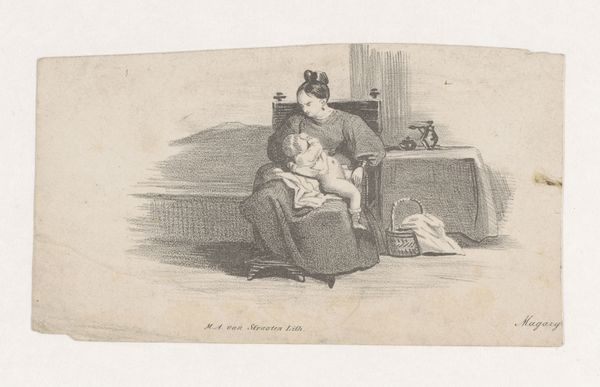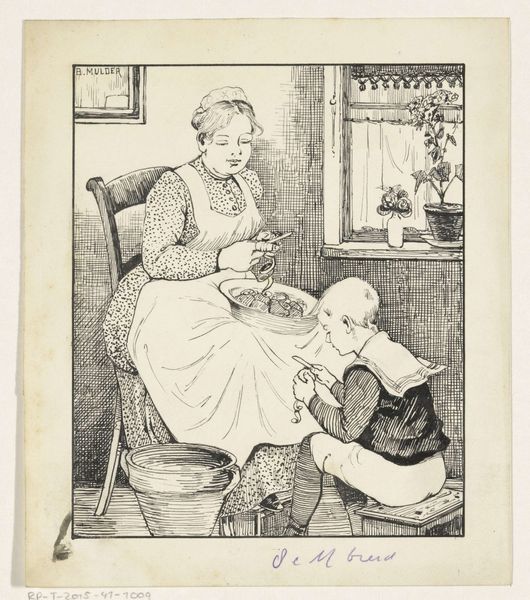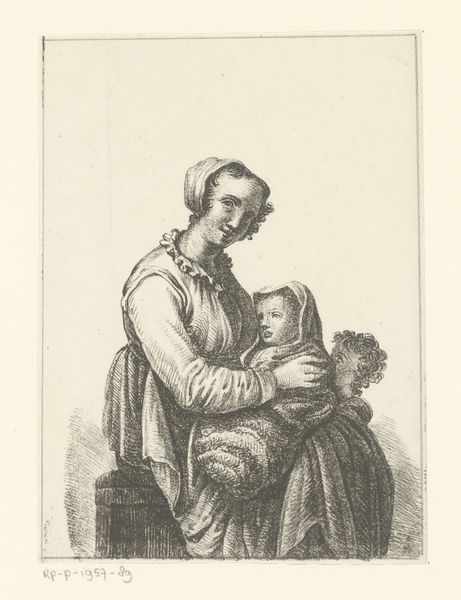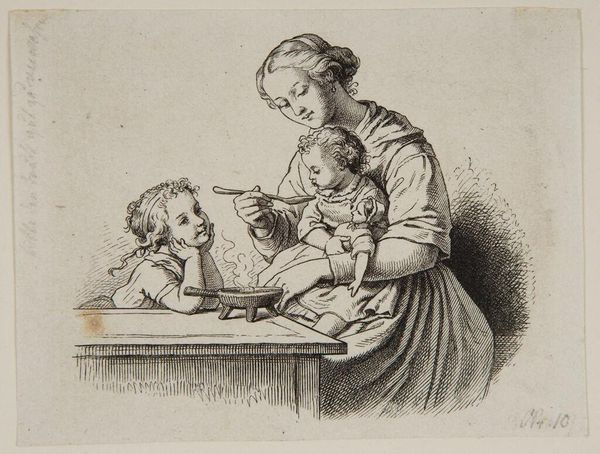
drawing, paper, ink, pencil
#
portrait
#
drawing
#
pencil sketch
#
paper
#
ink
#
pencil
#
watercolour illustration
#
genre-painting
Dimensions: height 134 mm, width 84 mm
Copyright: Rijks Museum: Open Domain
Curator: Let’s take a look at this intriguing genre scene, “Maria en dienstmeid zitten bij tafeltje,” which roughly translates to “Maria and maid sitting at a table”. It's attributed to Johannes Alexander Rudolf Best and thought to have been created sometime between 1807 and 1823. The piece combines ink, pencil, and watercolour on paper. Editor: The first thing that strikes me is the simplicity and the apparent drudgery in this scene. The figures are cramped into the corner, the woman's attire appears homespun and unremarkable, as do the bare, blocky forms that compose the setting. Curator: Yes, considering Best's background and the artistic climate of the time, it’s likely that this work serves as social commentary. During this period, depictions of domestic life and the lives of everyday people were becoming more common. The material conditions of working women would definitely be considered a popular and pressing social topic. Editor: I agree. I think it's worth looking at the details in the figures themselves. Notice the maid’s downward gaze. Is it just tiredness or does it perhaps suggest her social position relative to Maria, whose pose looks regal by comparison. What objects did they have to use and own? I'd wager nothing of particular value here. Curator: Precisely. And let's also consider the artist's method. Best used pencil, ink and watercolor— accessible materials compared to traditional oils. His choices democratize art-making itself and create a different aesthetic of form and value within the picture. It is, ultimately, about labor relations. Editor: Absolutely. It makes you wonder about the intended audience. Would the elites have purchased artworks depicting less privileged individuals? Perhaps. Maybe art collecting was becoming more class-diverse as well at the time. The imagery certainly lends itself to this question of how to consider one's position within society. Curator: Indeed, examining this seemingly simple scene, through the lens of its materiality and historical context, gives us an opportunity to consider power, class and art in the early 19th century. Editor: I agree, it makes one reflect on social status during that historical period. It’s a small work that tells us so much about that particular time.
Comments
No comments
Be the first to comment and join the conversation on the ultimate creative platform.













